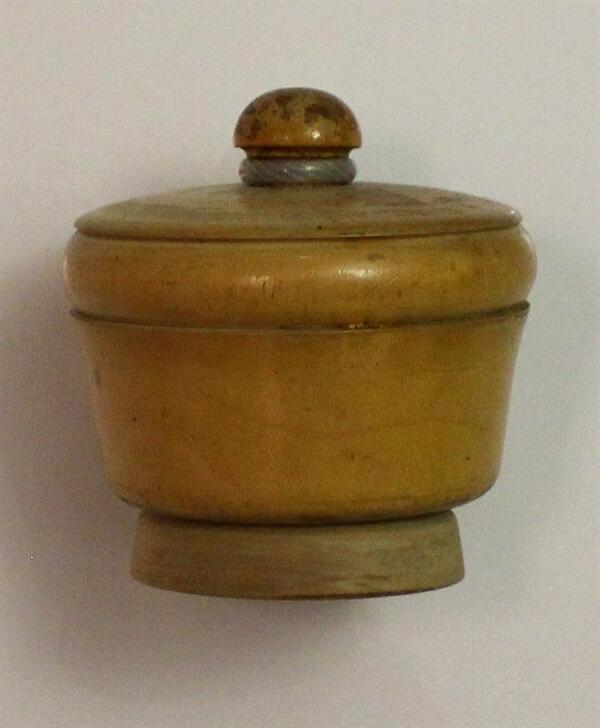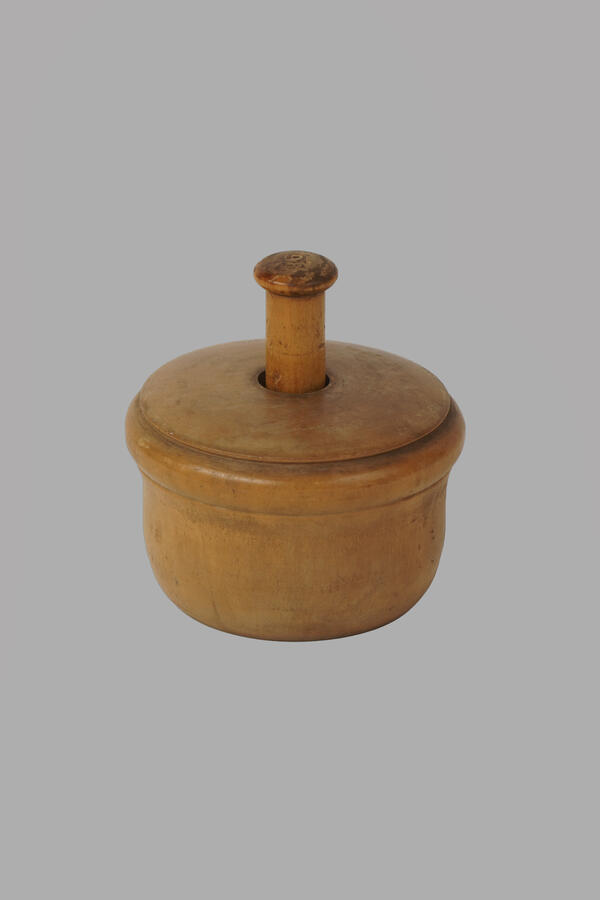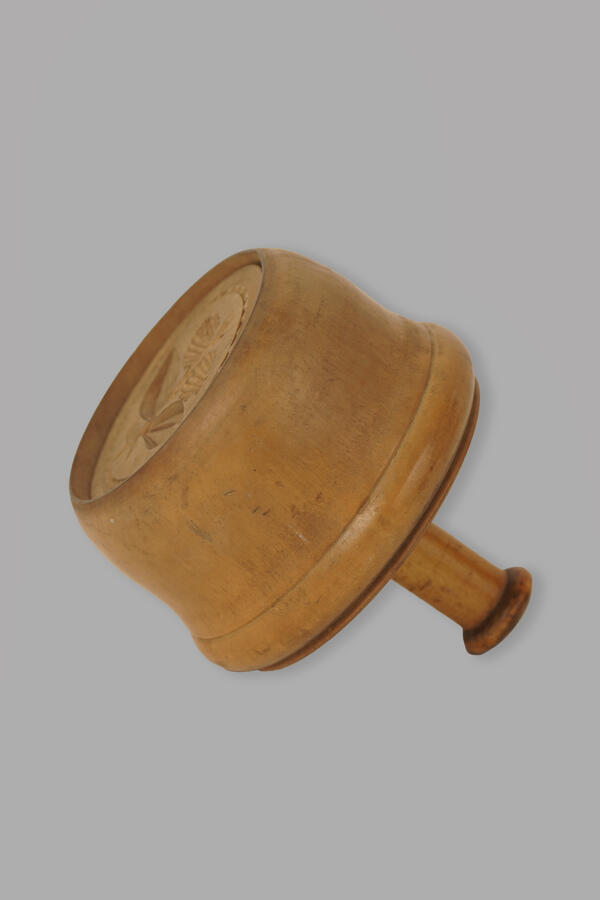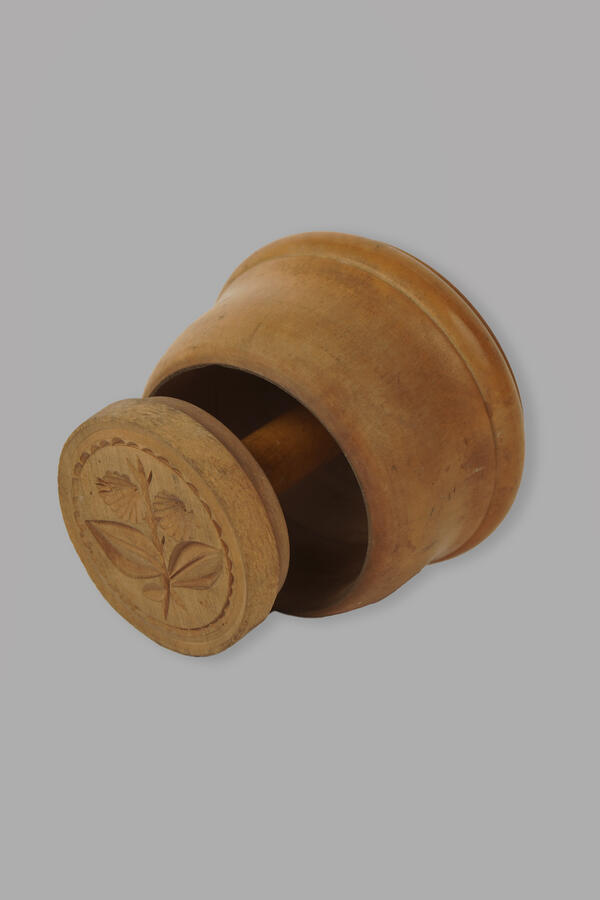Butter was known in ancient Mesopotamia and Egypt. In the 5th century AD it was a fairly common product among the Irish. Norwegian travelers of the 8th century took butter in barrels on sea voyages.
In Russia, butter began to be prepared no later than the 9th century. According to manuscripts, butter sometimes made a long way from the village where it had produced to the Netherlands. Foreign merchants bought it from the monks of the Tryphon Pechenga monastery, that received it from peasants.
Butter was whipped from a mixture of sour cream, fresh milk and yogurt, the most delicious butter was made from sour cream and cream. This product could not be stored for long, but it could still be used even after it was not fresh any longer. It was melted in the stove and a product similar to ghee was obtained — the Europeans called it “Russian butter”.
The most famous variety of domestic butter called “Vologda” was made by Russian cheese maker Nikolay Vasilyevich Vereshchagin. At one of the Paris exhibitions, he especially noted the aroma and taste of Normandy butter and decided that he could do just as well. Having returned to Russia, he created a product from cream that was almost boiled and presented it at a new exhibition. The resulting butter was even tastier than the Normandy one, with a subtle flavor of nuts, and the organizers enjoyed it. The cheese maker himself called it “Paris butter”, and the French began to call it “Petersburg butter”. The butter received its modern name “Vologda” only in the 20th century.
People who did not have cellars and ice houses greatly appreciated salted butter. Approximately 1.5% salt was added during the process of preparing butter, and such a product was stored much longer.
Russian factories began to manufacture butter in the 19th century. The business was so successful that by the end of the century there were already 700 butter-producing plants. Most of the product was exported to Europe. Siberia was especially famous for its butter.
Butter was to be served beautifully on the table. In Russia and Europe, special stamps were used, with the help of which it was possible to “stamp” the butter with some kind of image. When serving pancakes to guests during the Maslenitsa Week, housewives would certainly put a piece of butter decorated with a stamp on top as a personal signature.
In Russia, butter began to be prepared no later than the 9th century. According to manuscripts, butter sometimes made a long way from the village where it had produced to the Netherlands. Foreign merchants bought it from the monks of the Tryphon Pechenga monastery, that received it from peasants.
Butter was whipped from a mixture of sour cream, fresh milk and yogurt, the most delicious butter was made from sour cream and cream. This product could not be stored for long, but it could still be used even after it was not fresh any longer. It was melted in the stove and a product similar to ghee was obtained — the Europeans called it “Russian butter”.
The most famous variety of domestic butter called “Vologda” was made by Russian cheese maker Nikolay Vasilyevich Vereshchagin. At one of the Paris exhibitions, he especially noted the aroma and taste of Normandy butter and decided that he could do just as well. Having returned to Russia, he created a product from cream that was almost boiled and presented it at a new exhibition. The resulting butter was even tastier than the Normandy one, with a subtle flavor of nuts, and the organizers enjoyed it. The cheese maker himself called it “Paris butter”, and the French began to call it “Petersburg butter”. The butter received its modern name “Vologda” only in the 20th century.
People who did not have cellars and ice houses greatly appreciated salted butter. Approximately 1.5% salt was added during the process of preparing butter, and such a product was stored much longer.
Russian factories began to manufacture butter in the 19th century. The business was so successful that by the end of the century there were already 700 butter-producing plants. Most of the product was exported to Europe. Siberia was especially famous for its butter.
Butter was to be served beautifully on the table. In Russia and Europe, special stamps were used, with the help of which it was possible to “stamp” the butter with some kind of image. When serving pancakes to guests during the Maslenitsa Week, housewives would certainly put a piece of butter decorated with a stamp on top as a personal signature.







